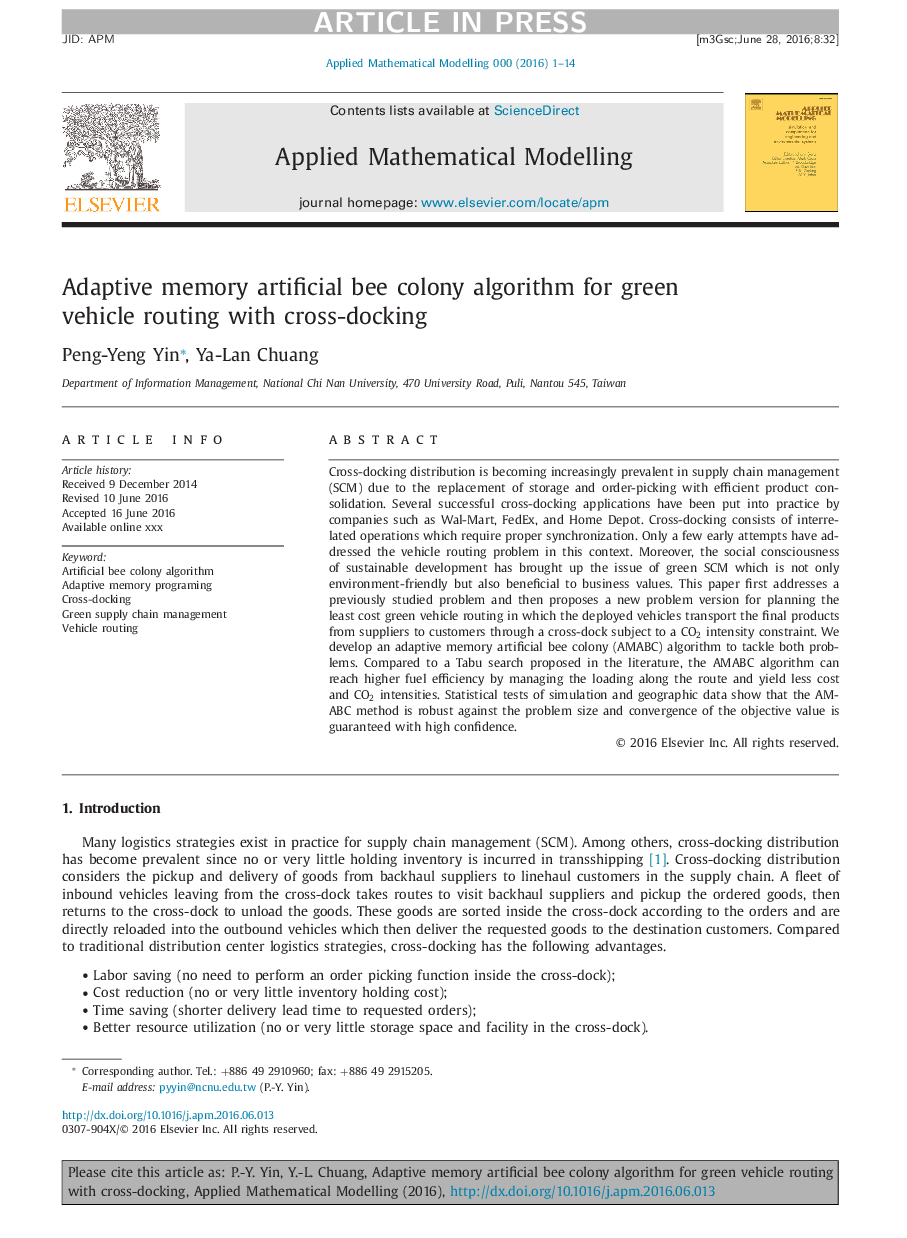| Article ID | Journal | Published Year | Pages | File Type |
|---|---|---|---|---|
| 5471473 | Applied Mathematical Modelling | 2016 | 14 Pages |
Abstract
Cross-docking distribution is becoming increasingly prevalent in supply chain management (SCM) due to the replacement of storage and order-picking with efficient product consolidation. Several successful cross-docking applications have been put into practice by companies such as Wal-Mart, FedEx, and Home Depot. Cross-docking consists of interrelated operations which require proper synchronization. Only a few early attempts have addressed the vehicle routing problem in this context. Moreover, the social consciousness of sustainable development has brought up the issue of green SCM which is not only environment-friendly but also beneficial to business values. This paper first addresses a previously studied problem and then proposes a new problem version for planning the least cost green vehicle routing in which the deployed vehicles transport the final products from suppliers to customers through a cross-dock subject to a CO2 intensity constraint. We develop an adaptive memory artificial bee colony (AMABC) algorithm to tackle both problems. Compared to a Tabu search proposed in the literature, the AMABC algorithm can reach higher fuel efficiency by managing the loading along the route and yield less cost and CO2 intensities. Statistical tests of simulation and geographic data show that the AMABC method is robust against the problem size and convergence of the objective value is guaranteed with high confidence.
Related Topics
Physical Sciences and Engineering
Engineering
Computational Mechanics
Authors
Yin Peng-Yeng, Chuang Ya-Lan,
